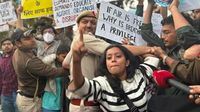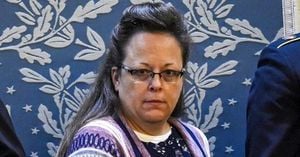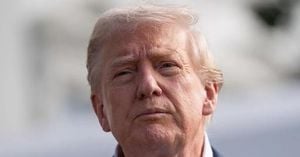On September 8, 2025, Nepal found itself at the epicenter of a historic upheaval—one that would not only topple its government but also send shockwaves through the region as a new generation, fueled by digital connectivity, took to the streets. What began as a sudden government ban on 26 social media platforms quickly escalated into a nationwide revolt led by young citizens, collectively known as "Gen Z." As the dust settles, the country is grappling with the aftermath of violence, political uncertainty, and the urgent question of what comes next.
According to Daily Times, the protests—which erupted after the ban—were initially peaceful, with young people rallying against what they saw as an attack on their freedom of expression. But as outrage grew over deeper issues like corruption and economic hardship, the demonstrations spiraled into violence. Over two chaotic days, at least 76 people were killed, including 63 protesters, 10 escaped prisoners, and three police officers. More than 2,700 structures, ranging from parliament and the Supreme Court to police stations, party offices, businesses, and homes, were damaged or attacked. Supermarkets and stores were looted, and law enforcement struggled to contain the unrest.
The scale of the chaos was staggering. As The Citizen reported, approximately 14,500 detainees escaped from prisons nationwide during the turmoil, with 5,020 still at large as of early November. In the wake of the uprising, Nepalese authorities arrested 423 people on charges including murder, vandalism, theft, illegal possession of weapons, and indecent behavior. Some protesters were even seen brandishing rifles, allegedly seized from the police. Police spokesman Abi Narayan Kafle told reporters, "A team is looking into the incidences and we are working to collect information." The government, meanwhile, launched a nationwide operation to recover stolen weapons and recapture the escapees.
But the story of Nepal’s Gen Z uprising is not just about violence and chaos—it’s also a story of digital mobilization and generational change. As The Indian Express detailed, these protests were orchestrated through viral TikTok videos, Discord chats, and meme campaigns. In the days following the government’s social media blackout, young activists used the encrypted messaging platform Discord to rally support for 73-year-old former chief justice Sushila Karki. She was ultimately nominated and appointed as interim prime minister, tasked with leading the country through a delicate transition until the next general elections scheduled for March 2026.
The digital nature of the movement echoed recent global trends. Across Asia and Africa in 2025, Gen Z-led uprisings against corruption and inequality have erupted—often propelled by social media campaigns. From Morocco’s "GenZ 212" movement protesting World Cup spending, to Mongolia’s student-led democratic reforms, to the Philippines’ anti-elite rallies, young people have leveraged platforms like TikTok, Instagram, Telegram, and Discord to organize, spread information, and build solidarity. In Nepal, memes and reels exposing nepotism (the so-called "nepo-kids") and economic woes resonated with a generation facing 20 percent youth unemployment and heavy reliance on remittances.
Yet, the Nepalese government’s attempt to stifle dissent by banning social media backfired spectacularly. The blackout, officially justified as a tax enforcement measure, cut off vital economic and social lifelines for many young people. Instead of quelling unrest, it radicalized and united the opposition. As The Indian Express noted, "Governments' bans on social media often backfired, radicalizing youth and uniting opposition, as seen in Nepal and Morocco." The events in Nepal serve as a case study in the double-edged power of digital activism: social media can lower barriers to collective action and create a critical mass for protest, but it can also accelerate chaos, spread misinformation, and foster polarization.
In the aftermath, the government imposed travel bans on former prime minister KP Sharma Oli and several senior officials, while an investigative commission was established to examine the root causes of the unrest. Meanwhile, youth leaders from the Gen Z movement have called for Home Minister Om Prakash Aryal’s resignation, accusing him of mishandling the protests and failing to ensure justice for victims of the crackdown. Aryal has responded by promising a "special operation" to recapture escaped prisoners and recover looted weapons, but trust between the youth and authorities remains tenuous at best.
The political landscape has been reshaped. As reported by Devdiscourse, Minendra Rijal, a prominent Nepali Congress leader, has called on the interim government under Prime Minister Sushila Karki to build trust with all political parties. "The interim government must act as impartial referees, devoid of political aspirations, to ensure election integrity," Rijal said. Without public trust and political inclusivity, he warned, Nepal’s path to stability will remain precarious. Nepali Congress President Sher Bahadur Deuba echoed the need for robust security measures ahead of the polls, while the Communist Party of Nepal-Unified Marxist Leninist (CPN-UML), led by ousted Prime Minister KP Sharma Oli, has voiced opposition to the proposed March 2026 election date.
International observers and regional analysts are watching Nepal closely. The events of 2025 have underscored the growing influence of Gen Z as a political force, not just in Nepal, but globally. According to UN projections cited by The Indian Express, Gen Z will make up 40 percent of the world’s population by 2030, driving what some are calling "phygital" activism—a blend of physical protests and digital campaigns, sometimes involving AI-generated deepfakes and bots. The Nepal uprising, with its combination of online mobilization and real-world consequences, may be a harbinger of political movements to come.
At the same time, the events have raised urgent questions about the responsibilities of governments, tech platforms, and civil society. Should social media companies be treated as public utilities, with obligations to ensure the integrity of public discourse? How can states balance the need for security and stability with the imperative to protect freedom of expression? Some experts, like those cited in Rest of World and The Indian Express, advocate for collaborative moderation frameworks and regulatory models that promote transparency without stifling dissent. Others warn that suppression only breeds further resistance, as seen in Nepal’s failed social media ban.
For now, Nepal stands at a crossroads. The interim government faces a daunting task: restoring order, rebuilding trust, and guiding the country toward fair and inclusive elections. Gen Z, emboldened by its recent success, is unlikely to retreat from the political stage. As one chapter closes, another begins—and the world is watching to see how Nepal’s experiment with digital-age democracy unfolds.
The scars of September’s uprising are still fresh, but so too is the hope that a new generation might chart a different course for Nepal’s future.





